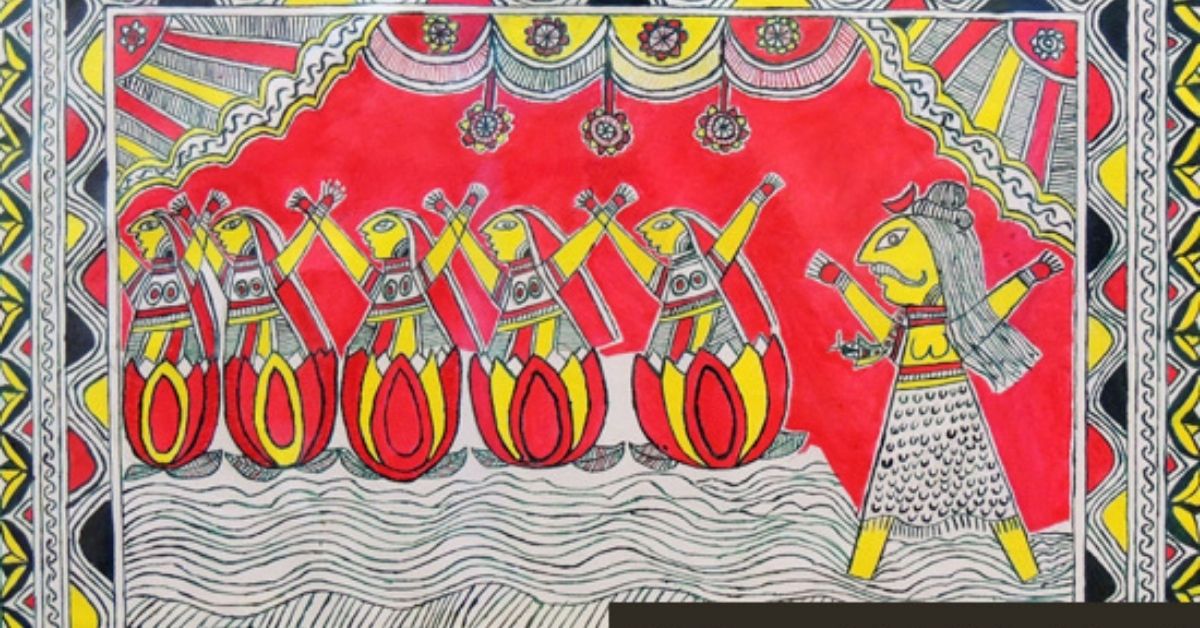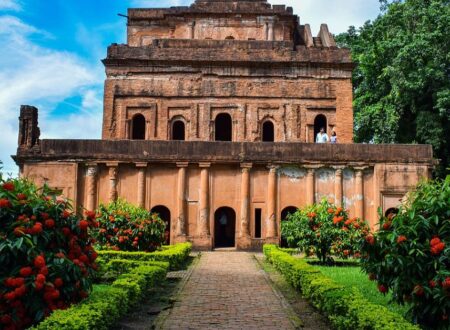Manjusha painting is the traditional Indian art of “Angpradesh”. The Ang region of Bihar is today known as Bhagalpur. Manjusha is a Sanskrit word that means ‘box.’ It alludes to temple-shaped bamboo, jute straw, and paper boxes. Devotees used these boxes to store items for the Bishahari Puja.
History of Manjusha painting
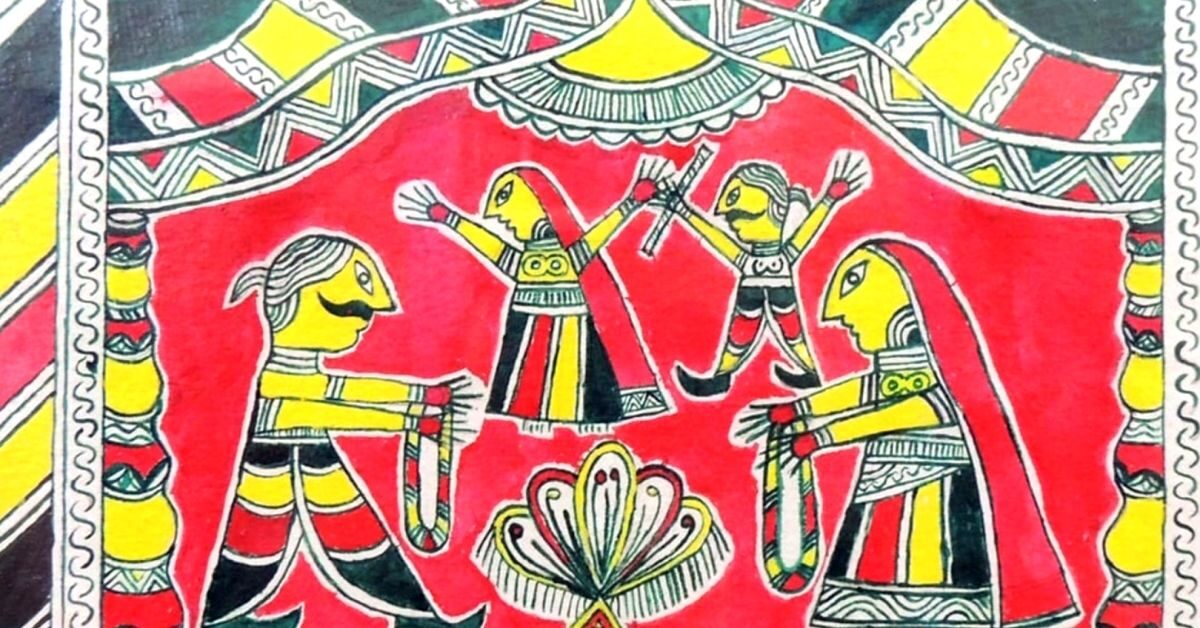
In the olden days, two families were responsible for this skill: the Kumbhakar and Malakar families. During the occasion, the Manjusha painting is painted and revered on pots created by the Kumbhakar people. The actual “Manjusha” is built by the Malakar community and decorated with Manjusha paintings. In the Kashira community, “peetal”/brass pots were popular. These days, only two families practice this traditional art form.
Although this Indian painting art has a long history in Bhagalpur, it became prominent between 1931 and 1948. During this period of British administration, an ICS officer named W.G Archer and his wife began researching Madhubani painting and Manjusha art. He became enamored with the medium. The traditional paintings mesmerized them. W.G.Archer assembled a ‘Manjusha art collection’ and had an exhibition in London’s India Office Library, which became part of the Archer Collection. It was at this time that Manjusha art achieved some international recognition.
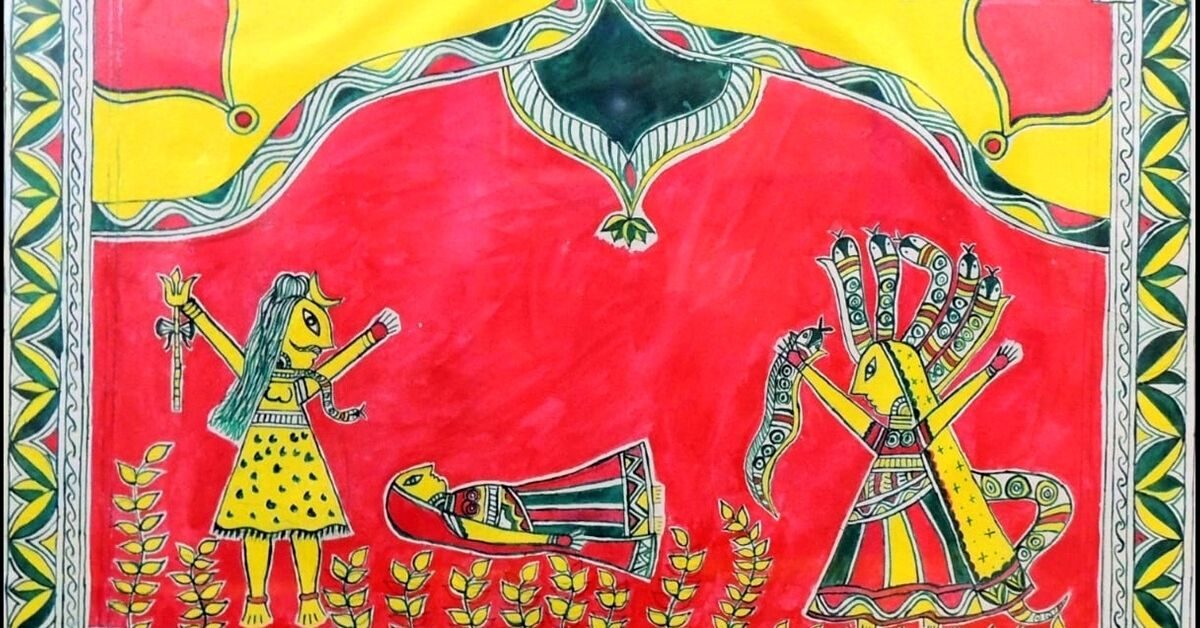
Unfortunately, despite the little encouragement from the British administration during the period, artisans were unable to popularise this art form further. After its popularity faded, Manjusha painting seemed to further fade into the background, with only a few practitioners remaining. This continued until 1984 when the Bihar government launched an effort called “Jansampoorna Vibagh,” in which they visited Bhagalpur villages and displayed slideshows of Manjusa art and educated people about the traditional art form in the hopes of restoring it.
Mr. Manoj Pandit, an artisan, began experimenting with different materials and began practicing Manjusha painting on silk and other fabrics in 1992, which helped to elevate the art to the next level. From being a solely ‘religious’ art, the artisans were able to incorporate it into products that were more marketable.
Characteristics of Manjusha painting
Manjusha Art is a line drawing technique that has been on scrolls for centuries. Manjusha Art’s three signature colors are pink, green, and yellow. Characters in Manjusha art were the letter ‘X’ in English. It is a type of art that uses art to express essential stories about major social issues. Manjusha Art depicts ‘Lok Gatha’ i.e. paintings based on a tale.
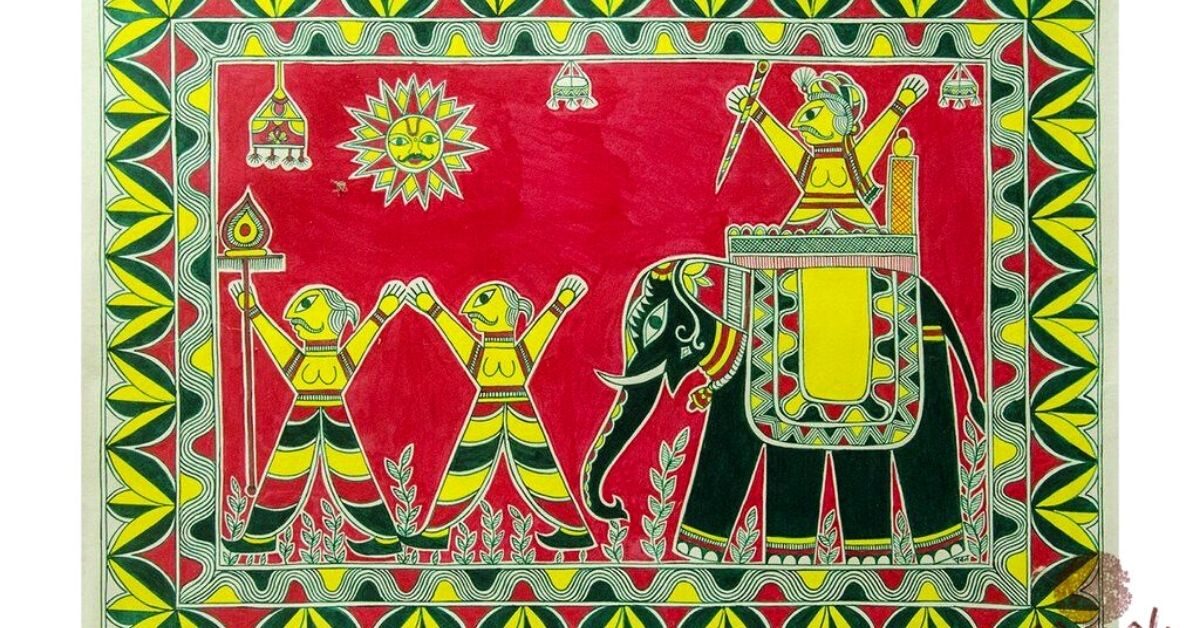
In 2006, NABARD and the Non-Governmental Organization Disha Gramin Vikas Manch joined together to revive this folk craft. With the help of NABARD, Disha launched the three-year Manjusha Art Development Programme in all sixteen Bhagalpur blocks.
The organization ran a public awareness campaign in all of the selected blocks and trained over 2000 rural women. Also, the organization recruited 250 trained artisans from the Naugachhia and Shahkund Blocks and launched the “Manjusha Art Activity-Based Group,” an innovative project. Moreover, under this program, 50 activity-based groups, and large-scale Manjusha Crafts got a chance to develop themselves. Manjusha Flower Stand, Pen Stand, Jute Folders, Ornaments, and other daily utility products were the part of this project.
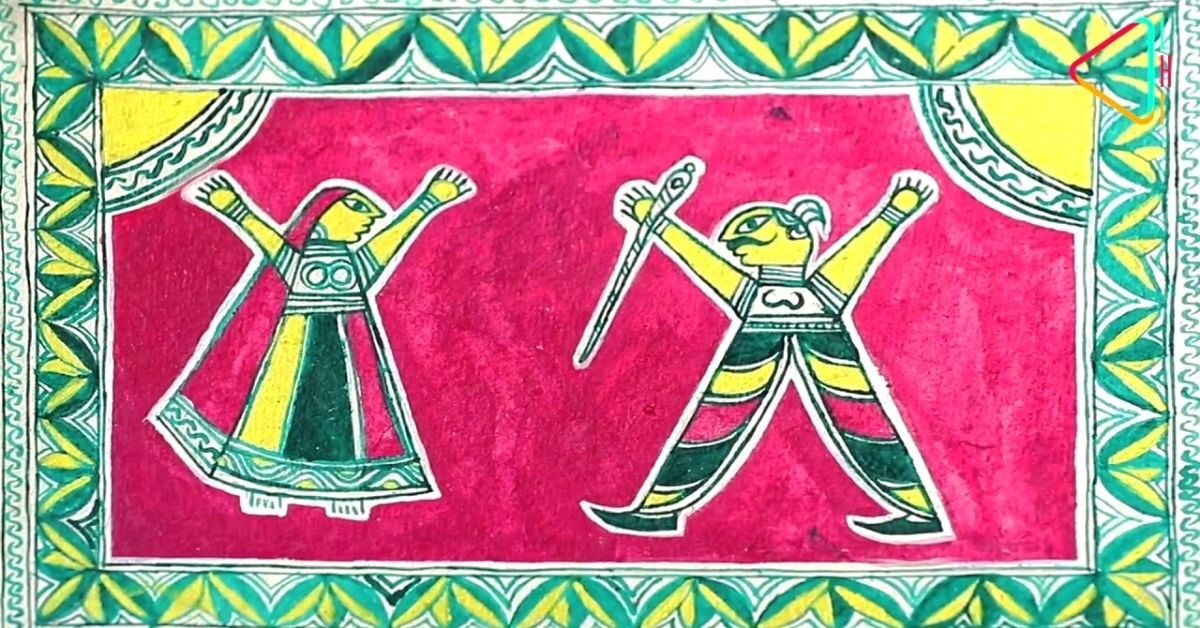
The Bihar government has been working hard to resuscitate this craft, and skill up-gradation workshops have been in Bhagalpur and the surrounding areas. They have made a good effort to raise public awareness about this craft. Moreover, they’ve taken steps like making it essential for all Zilla Parishad banks to have a Manjusha painting artwork hanging in their lobby, which automatically gives craftsmen a market. Also, the Bihar government recently formed a committee consisting of 11 members, four of whom are craftsmen, to file for a patent for the Manjusha painting form. In fact, they intend to trademark it as Bhagalpur’s traditional folk art.

